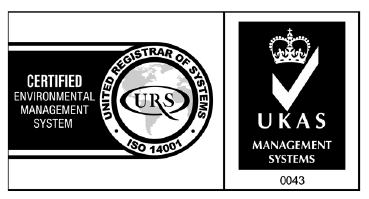The Importance of a Prevention Programme
In simple terms, the most effective way of reducing the risk of pressure ulcers is to ensure that you have a good prevention programme in place.
There is significant research to support that implementing comprehensive pressure ulcer prevention programmes reduces the incidence of pressure ulcers. 1
From a patient’s perspective this is also important as pressure ulcers are painful wounds. They are caused when increased pressure is placed upon a particular area of the skin over a prolonged period of time with some areas of the body more susceptible. Patches of skin which lie over a bony part of the body are most at risk, for example the;
- Buttocks
- Ankles
- Back
- Hips 2
Whilst these areas are the most susceptible, patients and carers should also be mindful of pressure ulcers developing on the rim of the ears and to the back of the head.
However, there are a number of preventative measures that can, and should, be taken within all healthcare establishment which can help to minimize any potential risk. They should include;
- Changing position regular
- Skin inspection
- Good nutrition
- Quitting smoking
- Use of pressure relieving devices such as cushions and mattresses 3
By ensuring a good pressure ulcer program is in place, the risk of pressure ulcers occurring in vulnerable people can be largely reduced. Without these strategies in place healthcare companies could face legal action.
The consequence of not implementing clinical guidelines on pressure ulcer risk assessment and prevention could result in the possibility of litigation.4
Who’s Most at Risk
There is a varied group of people who stand to be more at risk of developing pressure ulcers and people who fall under this category are usually:
- Elderly (being over the age of 70)
- Those who have a mobility problem
- Individuals with health issues (disrupting blood supply)
- Those who have a poor food/fluid intake
- People with Incontinence issues
- And those who suffer Mental health problems which impacts over their physical health 5
Pressure ulcers can occur rapidly and they need to be treated urgently before they quickly progress to a more serious and serve wound.
If ischemia (an inadequate blood supply to a particular part of the body) is persistent on an area of the body for a certain period of time then necrosis (where most or all of the cells in the tissue begin to die as a result of restricted blood supply to the skin) will begin to form. This is the start of a pressure ulcer and, in more vulnerable patients, pressure ulcers can develop within only one hour. 6
The Cost of Pressure Ulcers
Pressure ulcers therefore pose a significant cost within society, both to the patient in relation to pain management, and also to the NHS financially. The financial cost of treating a pressure ulcer will of course depend upon the severity of the wound.
Currently the overall annual cost of treating pressure ulcers within the UK stands at around a staggering one to two billion pounds.
The total cost in the UK is £1.4 – £2.1 billion annually (4% of total NHS expenditure). Most of this cost is nurses time. 7
The human cost of a pressure ulcer can be a debilitating experience and some patients have highlighted just how painful pressure ulcers can be.
Bibliography
1 Lyder, C & Ayello, E (2008) Pressure Ulcers: A patient Safety Issue [online] Available at: http://www.ncbi.nlm.nih.gov/books/NBK2650/ [Accessed 30/08/2016]
2 Macon, L & Solan, M (2015) What you should know about Decubitus ulcers [online] Available at: http://www.healthline.com/health/pressure-ulcer#Overview1 [Accessed 30/08/2016]
³ NHS (2014) Pressure Ulcer – Prevention [online] Available at: http://www.nhs.uk/conditions/pressure-ulcers/pages/prevention.aspx [Accessed 13/09/2016]
⁴ Richens, Y et al (2003) Pressure ulcer risk assessment and prevention [online] Available at: https://www2.rcn.org.uk/__data/assets/pdf_file/0003/109839/002166.pdf [Accessed 20/09/2016]
⁵ NHS (2014) Pressure Ulcers – Causes [online] Available at: http://www.nhs.uk/Conditions/Pressure-ulcers/Pages/Causes.aspx [Accessed 30/08/2016]
⁶ Gebhardt. K (2002) Causes of Pressure Ulcers [online] Available at: https://www.nursingtimes.net/part-1-causes-of-pressure-ulcers/206473.article [Accessed 13/9/2016].
7 Bennet. G et al (2003) The cost of pressure ulcers in the UK [online] Available at: http://ageing.oxfordjournals.org/content/33/3/230.abstract [Accessed 13/09/2016]
About the author – Ray Booth
Ray Booth is Research & Innovation Director at Select Medical. He has been involved in the pressure care equipment industry for over 20 years. In that time he has created a wide range of well-designed alternating air pressure mattress systems for use in hospital, hospice and community healthcare sectors.








